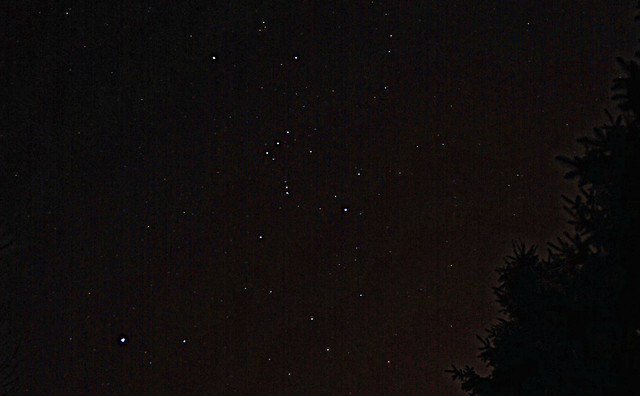Saturday, March 3, 2012
Visual Journey from Sirius to Betelgeuse and Rigel
Go out tonight if the sky is clear around 8 pm local time (in the northern hemisphere) and you'll see this star pattern in the southern sky. I took this image last week framed with my backyard tree. One of the most recognizable constellations, Orion the hunter, dominates this sky scene. You can make out Orion's human shape complete with three belt stars.
The bright star in the lower left corner of the photo is Sirius, a huge blue-white star, actually two, in the Canis Major (the dog star) constellation. Sirius is the brightest star in the northern hemisphere and is located a mere 6 trillion miles from us.
Betelgeuse is the reddish star located in Orion's upper left shoulder. Its a massive stellar object whose surface has been resolved through some special telescopes to reveal sunspots. If placed in our solar system Betelgeuse would extend from our sun's location to the orbit of Mars. That's huge!
The star named Rigel, in Orion's lower right foot position, is a blue white light source whose science fiction fame grew in Star Trek's original series as a solar system containing intelligent life forms. Just saying.
Look at the three belt stars in Orion and notice the stars positoned below on the left side. Those are known as the dagger or sword of Orion. Actually one object is the Orion Nebula - M42. Its a star making factory that is 5,600 light years from Earth. The Hubble Space Telescope has captured detailed images of the nebula's young stars and proto-stars. A fascinating place.
See what you can find on your next nighttime outing even without a telescope or binoculars. There's plenty to discover, including the very bright International Space Station zipping overhead. Find ISS with help from Space Weather. Know that.
Labels:
Betelgeuse,
Orion,
Rigel,
Sirius
Subscribe to:
Post Comments (Atom)


No comments:
Post a Comment